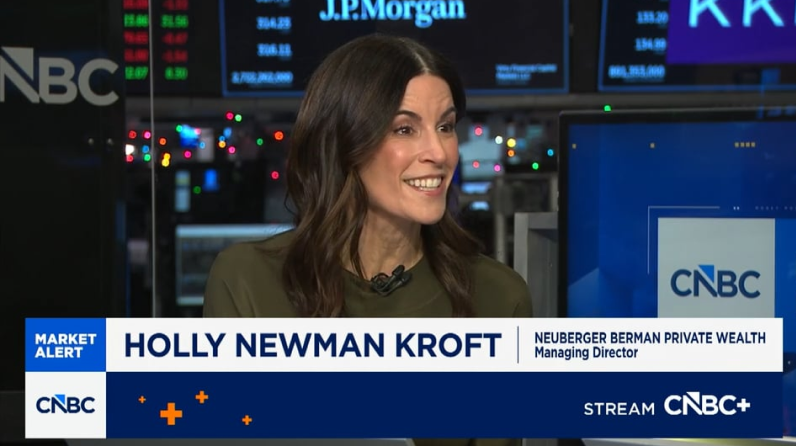

The probability of a Fed rate cut in September now stands at 100% and the potential for an outsized 50bps cut before year-end has increased as concerns about labor market deterioration outweigh the threat of higher prices from tariffs.
August U.S. non-farm payrolls came in light for the month, posting a gain of only +22k versus the consensus for +75k. The report was highly anticipated, coming on the heels of a significant miss in July coupled with meaningful downward revisions, both of which contributed to the ouster of the head of the Bureau of Labor Statistics, Dr. Erika McEntarfer, by President Donald Trump. Revisions were once again negative in aggregate, with the June print revised downward by -27k, resulting in a -13k print, while July’s number benefited from a positive revision of +6k. These changes, combined with today’s lackluster report, pushed the three-month trailing average for payroll gains to only +29k, reminiscent of 2020 levels.
Looking through the drivers of this month’s gains, health care and social assistance hiring combined for +47k, well off the prior month’s total, while leisure and hospitality rebounded to post a +38k gain. Retail was also higher by +11k. Federal government employment continues to decline, down another -15k in the month of August and off by -97k from its peak in January. Mining, manufacturing, and wholesale trade all posted losses for the month as well. As expected, the unemployment rate rose to 4.3% driven in part by a welcome increase in the participation rate from 62.2% to 62.3%. The number of employed persons also rose by +288k in the month, as the labor force grew by +436k. Average hourly wages also moved higher by +0.3% month-over-month and +3.7% year-over-year, helping to dampen tariff impacts for consumers; wages were higher even as hours worked declined slightly.
We believe that two takeaways from this release are worth watching in the coming months. First, the U.S. economy continues to experience job losses in goods producing industries. The intent of tariffs as understood by most investors is two-fold: to increase revenue and to encourage a more level playing field for U.S. goods which would in turn incentivize an increase in goods production in the U.S. In August, goods producing jobs in the U.S. were down by -25k in aggregate, and more specifically in manufacturing, -12k jobs were lost last month, and -78k have been lost this year. While we believe there are tailwinds in the form of tax incentives, a lower interest rate environment, and policy changes for companies to increase capital expenditure and shift more production to the U.S., there has been little to show for it in the labor market up to this point.
When looking more closely at the data, the second is the trend lower in hiring in health care, social assistance, and the U.S. government. In the post-pandemic period, these three industries accounted for the bulk of the jobs added. Should a deceleration in job gains in these sectors continue, private payrolls in areas such as financial services, technology, and the goods producing sectors mentioned above would need to accelerate to fill the gap. With the potential for productivity benefits derived from AI on the horizon, perhaps translating to the slow pace of entry level hiring in professional services, it might prove difficult to get that needed boost.
Translating the data into likely action, the probability of a Fed cut at the September meeting now stands at 100%. In addition, an outsized cut of 50 basis points between now and the end of the year has increased as well, as concerns about a more meaningful deterioration in the labor market are more than offsetting the threat of higher prices due to tariffs – particular as the fate of the Liberation Day reciprocal tariffs hang in the judicial balance. Equity markets appear to be discounting the risk of a broader economic slowdown, instead moving higher on the prospects for lower interest rates; small caps and growth are both benefiting in the early session. Treasury yields are lower across the curve, shifting in parallel with the expectations for a decline in the front end.
While we acknowledge that the risks appear to be somewhat less balanced after the last two non-farm payrolls reports, we remain of the view that the Fed will cut twice this year and will likely continue to cut rates for a cumulative 100 basis points through the first half of 2026. For fixed income investors, we remain focused on repositioning cash into more attractive opportunities and encourage a thoughtful approach to both duration and credit quality in this dynamic environment. Within equities, we believe that a rotation is likely to continue through the remainder of 2026 and advise allocations in small and non-US equities to complement existing U.S. large cap exposure.


VIDEO
The Kantor Group | Charles Kantor’s Year-End Reflections and Key Questions as We Head Into 2026

INSIGHTS
CIO Notebook: Dual Release of Delayed Non-Farm Payrolls Likely Supports Another Cut

INSIGHTS
Using Tax-Free Gifts for Wealth Transfer

INSIGHTS
CIO Notebook: Powell Plays the Middle as Fed Cuts Rates

MARKET COMMENTARY
Giving Thanks for Market Strength

INSIGHTS
CIO Notebook: September U.S. Non-Farm Payrolls Further Complicate the Narrative

VIDEO
Holly Newman Kroft Featured on CNBC’s Money Movers November 18
VIDEO
Plan for Peace of Mind with Our Estate Planning Organizer
MARKET COMMENTARY
Some Tricks, More Treats
INSIGHTS
CIO Notebook: Markets Rattled as Fed Leans Hawkish
REPLAY
Private Wealth Investment Outlook 4Q25
INSIGHTS
CIO Notebook: September Core CPI Comes in Late but Light
INSIGHTS
Charitable Fundraising: Moving Beyond Cash
IMPORTANT INFORMATION:
This material is provided for informational purposes only and nothing herein constitutes investment, legal, accounting or tax advice, or a recommendation to buy, sell or hold a security. This material is general in nature and is not directed to any category of investors and should not be regarded as individualized, a recommendation, investment advice or a suggestion to engage in or refrain from any investment-related course of action. Any views or opinions expressed may not reflect those of the firm as a whole. Neuberger Berman products and services may not be available in all jurisdictions or to all client types. Diversification does not guarantee profit or protect against loss in declining markets. Investing entails risks, including possible loss of principal. Investments in private equity are speculative and involve a higher degree of risk than more traditional investments. Investments in private equity are intended for sophisticated investors only. Unless otherwise indicated, returns shown reflect reinvestment of dividends and distributions. Indexes are unmanaged and are not available for direct investment. Investing entails risks, including possible loss of principal. Past performance is no guarantee of future results.
Portfolio positioning views expressed herein are those of Neuberger Berman’s Private Wealth Investment Group, which may include those of the Neuberger Berman’s Asset Allocation Committee. Asset allocation and positioning views are based on a hypothetical reference portfolio. The Private Wealth Investment Group analyzes market and economic indicators to develop asset allocation strategies. The Private Wealth Investment Group works in partnership with the Office of the CIO. The Private Wealth Investment Group also consults regularly with portfolio managers and investment officers across the firm. The Asset Allocation Committee is comprised of professionals across multiple disciplines, including equity and fixed income strategists and portfolio managers. The Asset Allocation Committee reviews and sets long-term asset allocation models, establishes preferred near-term tactical asset class allocations and, upon request, reviews asset allocations for large, diversified mandates. Asset Allocation Committee members are polled on asset classes and the positional views are representative of an Asset Allocation Committee consensus. The views of the Asset Allocation Committee and the Private Wealth Investment Group may not reflect the views of the firm as a whole and Neuberger Berman advisers and portfolio managers may take contrary positions to the views of the Asset Allocation Committee or the Private Wealth Investment Group. The Asset Allocation Committee and the Private Wealth Investment Group views do not constitute a prediction or projection of future events or future market behavior. Defensive positioning generally means an underweight bias on allocations to risk assets such as equities and alternatives. Positioning views may change over time without notice and actual client positioning may vary significantly. Discussion of yield characteristics or total returns of different asset classes are for illustrative purposes only. Such asset classes, such as equities and fixed income, may have significantly different overall risk-return characteristics which should be consider before investing.
The information in this material may contain projections, market outlooks or other forward-looking statements regarding future events, including economic, asset class and market outlooks or expectations, and is only current as of the date indicated. There is no assurance that such events, outlook and expectations will be achieved, and actual results may be significantly different than that shown here. The duration and characteristics of past market/economic cycles and market behavior, including any bull/bear markets, is no indication of the duration and characteristics of any current or future be market/economic cycles or behavior. Information on historical observations about asset or sub-asset classes is not intended to represent or predict future events. Historical trends do not imply, forecast or guarantee future results. Information is based on current views and market conditions, which will fluctuate and may be superseded by subsequent market events or for other reasons.
Discussions of any specific sectors and companies are for informational purposes only. This material is not intended as a formal research report and should not be relied upon as a basis for making an investment decision. The firm, its employees and advisory accounts may hold positions of any companies discussed. Nothing herein constitutes a recommendation to buy, sell or hold a security. It should not be assumed that any investments in securities, companies, sectors or markets identified and described were or will be profitable. Investment decisions and the appropriateness of this content should be made based on an investor's individual objectives and circumstances and in consultation with his or her advisors.
Neuberger Berman Investment Advisers LLC is a registered investment adviser.
The “Neuberger Berman” name and logo are registered service marks of Neuberger Berman Group LLC.